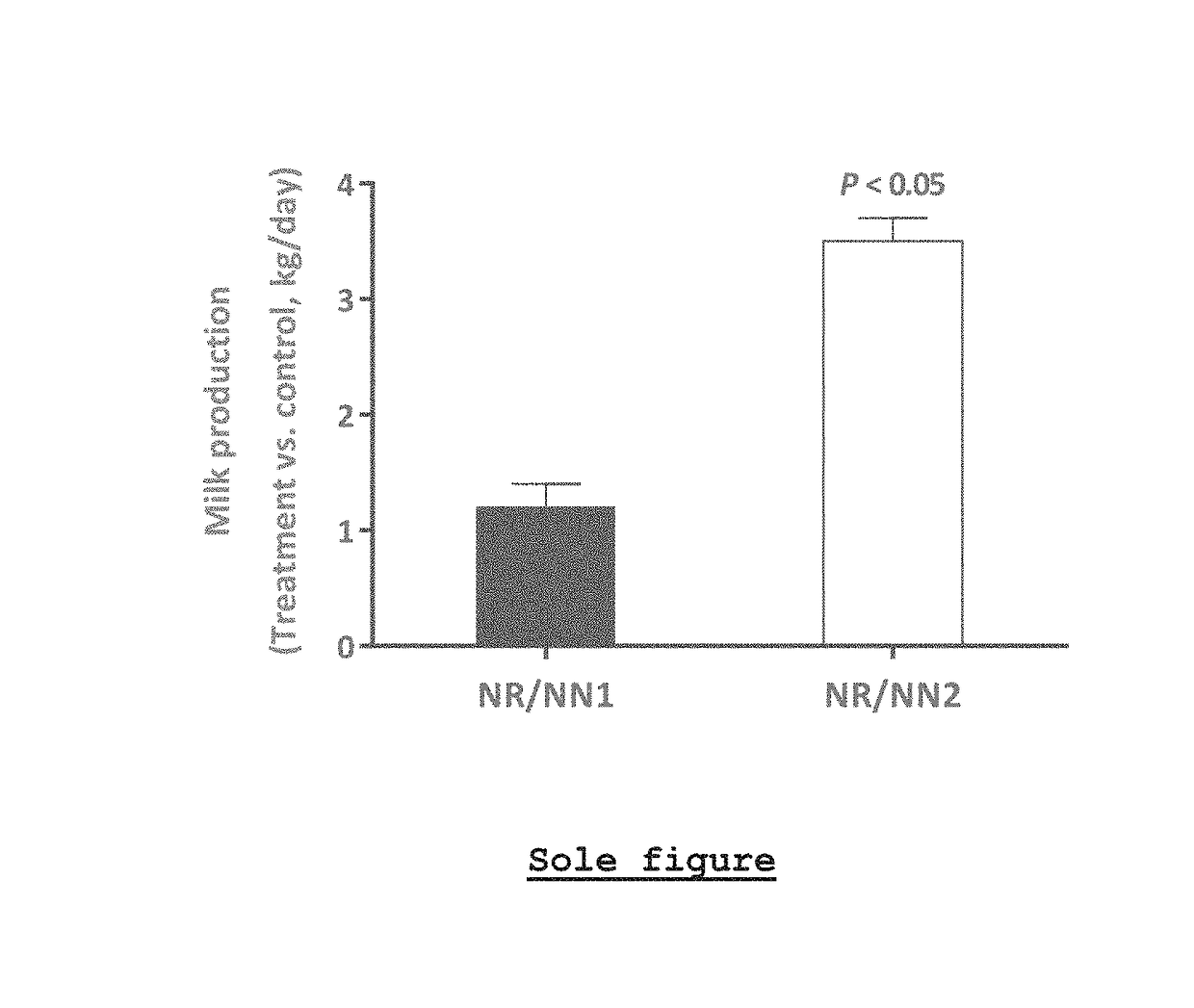Feed Additive, Method of Preparation, and Use in Order to Improve the Zootechnical Performance of a Ruminant
a technology for ruminant zootechnical performance and additives, applied in the field of ruminant nutrition and feeding, to achieve the effect of improving zootechnical performance, promoting access to certain nutrients, and affecting a ruminant's metabolism and immunity
- Summary
- Abstract
- Description
- Claims
- Application Information
AI Technical Summary
Benefits of technology
Problems solved by technology
Method used
Image
Examples
example 1
[0071]This example illustrates the method for preparing the feed additive according to the preferred embodiment of the invention described above, using plant extracts as an example.
Point a)
[0072]Two non-nutrients are chosen that are plant extracts contained in oleoresin capsicum. These are capsaicin and dihydrocapsaicin (hereinafter “CDC”).
Point b)
[0073]Method I is applied to the breakdown of CDC in the rumen. The results of this study lead to:[0074]a chromium disappearance rate=0.24[0075]a CDC disappearance rate=1.2
DRNN-P=100−(0.24÷1.2)×100=80%
Point c)
[0076]The obtained DRNN-P is 80%. This is higher than the DRNN-P threshold value (40% or 30%). Therefore, the plant extract is broken down in the rumen, and so we move to point e).
Point e), f), g)
[0077]At least one coating compound is chosen, which is hydrogenated rapeseed oil. The plant extracts are coated according to the method described in international application EP2088871 (US20100055253; WO2008062368). This is cold atomizing, w...
example 2
[0090]This example illustrates the efficiency of the feed additive according to the invention on the zootechnical performance of dairy cows.
[0091]The effect of the NR / NN2 product on animal performance has been determined on Holstein dairy cows receiving a feed without product or a feed with 100 mg per day of NR / NN2 providing 15.4 mg / day of oleoresin capsicum. It should be noted that this dose if very low in comparison to the feed consumption of about 30 kilograms of dry matter per day in dairy cows, because it corresponds to a 0.5 ppm content relative to the daily food intake.
[0092]The results are shown in the following table:
Treatment1ControlNR / NN2 0.5ppmP ValueIngested dry matter, kg / day29.130.00.22Milk production kg / day41.144.60.02Feed efficiency, kg / kg21.411.491Control, 0 mg / day NR / NN2; NR / NN2 100 mg / day of protected rumen capsicum product (15.4% oleoresin capsicum)2Milk production ÷ Ingested dry matter
[0093]It is observed that the incorporation of NR / NN2 into the diet improves ...
example 3
[0097]This example illustrates that the effect of the feed additive according to the invention on the zootechnical performance of dairy cows is the result of a non-nutritional response. Specifically, the example shows that the effect is controlled by a hormonal response to the NR / NN2 product.
[0098]The effect of the plant extracts was generally evaluated based on their antimicrobial effect and their ability to alter rumen fermentations for the ruminant's benefit.
[0099]To understand how, despite a dose that is 15 times lower, NR / NN2 is nearly 5 times more effective for milk production than NR / NN1, the inventors tried to understand the mechanisms underlying this response.
[0100]The effect of the NR / NN2 product on energetic metabolism is determined on Holstein cows exposed to a glucose tolerance test. Glucose was injected intravenously, and 10 samples of blood were collected over a period of 110 minutes and then analyzed for the glucose and insulin content in the serum. The results are g...
PUM
 Login to View More
Login to View More Abstract
Description
Claims
Application Information
 Login to View More
Login to View More - R&D
- Intellectual Property
- Life Sciences
- Materials
- Tech Scout
- Unparalleled Data Quality
- Higher Quality Content
- 60% Fewer Hallucinations
Browse by: Latest US Patents, China's latest patents, Technical Efficacy Thesaurus, Application Domain, Technology Topic, Popular Technical Reports.
© 2025 PatSnap. All rights reserved.Legal|Privacy policy|Modern Slavery Act Transparency Statement|Sitemap|About US| Contact US: help@patsnap.com

